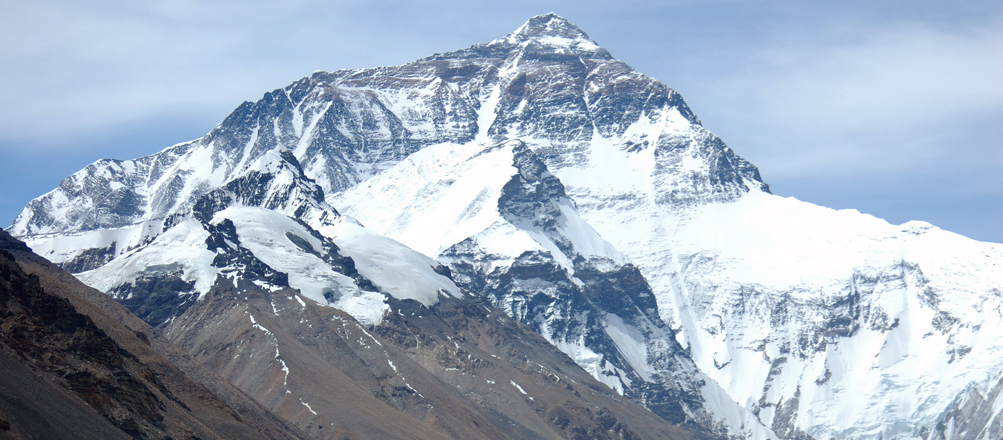| 5. Building the Highest Mountain on Earth – Qomolangma (Mount Everest)
Collision between the Indian and Asian continents during the Cenozoic resulted in formation of the largest active and fastest growing orogen in existence, the Himalayan mountain belt, with its highest peak, Qomolangma (Mount Everest) at 8848 m above sea level.
Viewed from the Tibetan (north) side Qomolangma today is a pyramid-shaped horn, sculpted by the erosional power of glacial ice into three massive faces and three major ridges during Pleistocene.
Qomolangma is composed of multiple layers of rocks folded back on themselves and separated by thrust and detachment faults:

|













